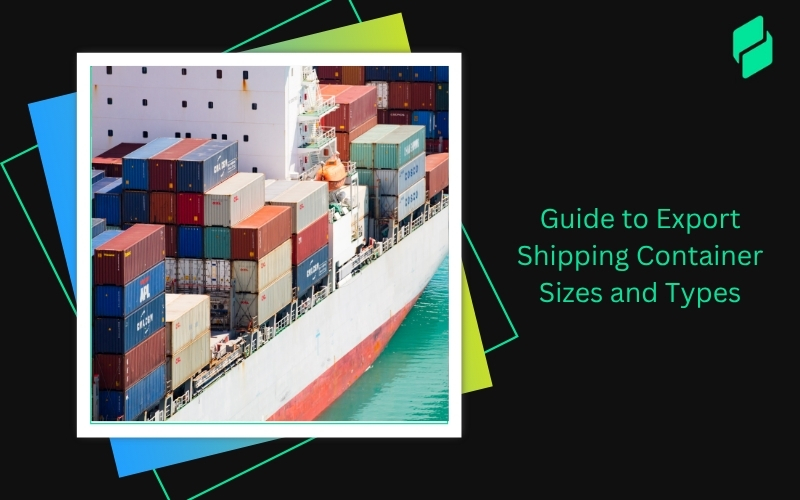Optimize your business: use unlimited savings with Pazago fulfilled now!
Get Started ->Tariff codes influence more than just your customs paperwork. They affect duty rates, compliance, and clearance times across every export transaction. According to the World Customs Organization (WCO), over 98% of global merchandise trade is classified using the Harmonized System (HS). In India, trade consultants report that misclassification can increase duty costs and delay shipments by 10-15%, depending on the product and destination.
This makes it critical for exporters to understand what these codes represent. If you're wondering what a tariff code is, what HTS is, or how the two differ, that is a common occurrence. But falling behind in this area puts your margins and reputation at risk.
This blog explains the meaning of the tariff code in simple terms, especially for Indian exporters targeting the US market. We break down the HS and HTS codes, how they function, and why choosing the right one gives you a competitive edge.
What is a Tariff Code?
A tariff code is a unique numerical identifier assigned to goods and commodities that cross international borders. These codes serve as a standardized method for customs authorities worldwide to classify and identify products. The primary purpose of tariff codes is to ensure that the correct duties, taxes, and regulations are applied to goods as they enter or leave a country.
When people ask, “What is a tariff number?” or “What is an HTS code?” They are essentially seeking to understand the tariff code meaning or the classification system that governments use to organize products in global trade. These codes provide detailed item descriptions, enabling customs to manage imports and exports effectively. They also help businesses, importers, and exporters determine the specific compliance requirements, tariffs, and trade restrictions that apply to their goods.
There are two major systems that dominate the global trade landscape when it comes to tariff codes:
- HS Code (Harmonized System Code)
An international system for classifying goods, developed by the World Customs Organization (WCO). It uses a six-digit hierarchical structure, with many countries adding extra digits for detailed national tariffs. It helps identify products for trade statistics and tariffs.
- HTS Code (Harmonized Tariff Schedule Code)
A U.S.-specific extension of the HS Code. It uses 10 digits. The first six match the HS Code, and the last four provide detailed classifications for U.S. tariffs and trade regulations.
So, why are these codes important in international trade? Let us understand below.
You Might Also Like: Definition, Types, and Effects Of Tariffs In International Trade
Why These Codes Matter to Exporters
In international trade, classification is fundamental, driving almost every aspect of the process. Understanding tariff code meaning is critical for any exporter. These codes, formally known as Harmonized System (HS) or Harmonized Tariff Schedule (HTS) codes, determine how products are categorized for customs. Using the correct code prevents costly mistakes, reduces delays, and ensures smoother cross-border transactions. Here’s why these codes are so crucial to exporters:
- Product Identification: The HTS code is your product’s legal identity in global trade. It standardizes classification for customs, ensuring clear, accurate representation and easier processing.
- Tariff Determination: HTS codes determine duty rates, which can range from 0% to high percentages. The correct code helps you avoid overpaying or underpaying, protecting your profit margins.
- Compliance and Documentation: HTS codes guide tax rules, required documentation, and compliance with trade regulations. The right code reduces the risk of delays, rejections, or penalties.
- Flags and Special Duties: HTS codes identify if your product is restricted, qualifies for duty-free treatment under trade agreements, or is subject to anti-dumping duties.
- Avoiding Costly Errors: Using the wrong code can lead to mispaid duties, legal trouble, and shipment delays. These issues can hurt both your profits and your reputation.
Simply put, think of the HTS code as your product’s legal identity in the world of customs. Just as you need to ensure accurate personal identification documents, you need to ensure the correct code for your product. One wrong digit in an HTS code can make the difference between paying 0% or 20% duty, or even having your shipment held up at the port while the error is sorted out.
That brings us to the HS and HTS codes, which are detailed below. Let us understand.
Also Read: Understanding Consolidated Cargo and How It Can Benefit You
Harmonized System (HS) Codes
The Harmonized System (HS) not only ensures consistent product classification across international markets but also helps streamline customs procedures, facilitate trade negotiations, and support accurate economic data collection. Many countries expand the HS codes beyond six digits to capture detailed product distinctions specific to their regulatory and trade needs.
Structure of an HS Code:
- First two digits (Chapter): Broad category of goods (e.g., "73" for iron or steel products)
- Next two digits (Heading): More specific product group within the chapter (e.g., "04" for pipes and tubes)
- Last two digits (Subheading): Granular detail, such as material, size, or use
Example:
A stainless-steel pipe might have an HS code starting with 7304:
- "73" represents iron or steel products
- "04" refers to pipes and tubes
- The final two digits specify the exact type
The HS system’s strength lies in its global uniformity. Used by over 180 countries, it reduces confusion, simplifies trade, and ensures that goods are classified and taxed consistently, regardless of origin or destination.
Beyond customs, HS codes help track trade statistics, determine duties, ensure regulatory compliance, and support logistics and business operations.
In short, the six-digit HS code is the international language of trade. It drives consistency, clarity, and efficiency in global commerce.
Suggested Read: Exploring Different Types of Marine Insurance Clauses
Harmonized Tariff Schedule (HTS) Codes
The Harmonized Tariff Schedule (HTS) code does more than just extend the HS code. It determines the actual duty rates, trade remedy measures such as anti-dumping or countervailing duties, and eligibility for special trade programs such as GSP or USMCA. Accurate HTS classification affects everything from customs clearance speed to compliance audits and landed cost calculations. Even small errors can lead to shipment delays, penalties, or incorrect duty payments.
Key features of HTS codes:
- U.S.-Specific Detail: HTS codes reflect American tariff and regulatory policies, helping distinguish between similar goods with different duties or restrictions.
- Global + Domestic Data: HTS codes combine international standards from the World Customs Organization with U.S.-specific rules from the Harmonized Tariff Schedule of the United States (HTSUS).
- Precise Duty Assignment: The added digits allow U.S. Customs and Border Protection (CBP) to assign accurate tariffs, taxes, and fees.
- Accurate Declarations: Using only the six-digit HS code isn’t enough. Exporters must use the full HTS code to ensure compliance and avoid delays or penalties.
The HTS code is essential for correctly classifying goods and navigating U.S. import regulations.
Let us now understand the key differences between HS and HTS below.
Suggested Read: Software HS Code for Import, Export, and Services in India | Pazago
Key Differences Between HS and HTS Codes

Understanding the tariff code meaning and the distinction between HS and HTS codes is vital for anyone navigating international trade or dealing with customs regulations. Here's an expanded comparison to clarify the key differences between these two systems:
Understanding these distinctions is essential for anyone involved in global trade, as it helps ensure compliance with customs regulations, accurate tariff assessments, and efficient international transactions. So, how do you find the correct tariff code for your business? Let us find this out in detail below.
You Might Also Like: What is Delivery Management and its Advantages?
How to Find the Right Code
Identifying the correct HS (Harmonized System) or HTS (Harmonized Tariff Schedule) code is critical to global trade compliance. When you understand tariff code meaning, you ensure accurate customs declarations, proper duty assessments, and alignment with trade regulations. Misclassifying your goods, even by a few digits, can result in shipment delays, excess duties, penalties, or even seizure of goods at the border.
Here’s how to find, validate, and maintain the most accurate product codes.
- Use Official Classification Tools
Government and trade bodies offer reliable, updated tools to identify the correct HS or HTS codes by product description. Examples include India’s DGFT search tool, the USITC HTS database, and CBP resources. These help narrow down codes from broad categories.
Example: Searching “wireless router” on USITC leads to code 8517.62.0010.
- Refer to Explanatory Notes
When classification is unclear, consult the WCO and USITC Explanatory Notes. They provide definitions, examples, exceptions, and legal clarifications to support accurate classification and defend decisions.
Example: Notes help decide if an all-in-one printer is classified as a printer or data processing machine, impacting duty rates.
- Check Regularly for Updates
HS and HTS codes update globally every five years, with interim changes due to trade shifts. Monitor these to avoid obsolete codes and missed duty exemptions.
Example: New codes for lithium-ion batteries were added as their use grew in electric vehicles.
- Use Automated Systems and ERP Integrations
Platforms like SAP GTS or Oracle GTM automate classification with AI and rule-based logic, reducing errors and ensuring up-to-date compliance.
Example: An ERP can auto-assign HS codes and duties for new products like Bluetooth speakers.
- Stay Informed—Even Minor Changes Can Affect Margins
Small tariff code changes can impact duty rates, certificates, or labeling, affecting margins and compliance risk. Subscribe to updates and train teams to spot changes.
Example: A subheading update might shift automotive parts from duty-free to taxable, risking penalties.
- Consult Customs Brokers or Trade Compliance Experts
For complex or ambiguous products, brokers provide expertise in interpreting specifications, comparing codes, and preparing for audits or rulings.
Example: Brokers help classify smartwatches as computers, timepieces, or communication devices.
- Use Binding Rulings for Legal Certainty
Request Binding Tariff Information (BTI) or rulings for guaranteed, legally binding classification, reducing disputes, and ensuring consistent treatment.
Example: An EU BTI for solar panels locks in duty rates across shipments.
- Understand Country-Specific Variations
HS codes harmonize to 6 digits, but countries extend them, affecting duties and documentation.
Example: The same backpack can have different duty rates in the U.S. and Canada due to local code extensions.
- Maintain an Internal Classification Database
Keep a master log of products, codes, rationale, update dates, and responsible staff to ensure consistency and audit readiness.
Tip: Review and update this database semi-annually or whenever there is a significant update to the Harmonized System or tariff schedule.
- Document Your Classification Process
Record legal notes, competing codes considered, expert input, and customs communication to support your decisions during audits or disputes.
Example: Documenting references helped defend biotech reagent classification in a CBP audit.
Now, let us discuss some best practices we can engage to use HS and HTS accurately.
Also Read: Understanding NMFC Codes and Freight Class Basics
Best Practices for Managing HS and HTS Codes
Understanding tariff code meaning is essential for managing Harmonized System (HS) and Harmonized Tariff Schedule (HTS) codes. These codes play a critical role in ensuring smooth international trade, reducing customs duties, and avoiding costly penalties. Proper classification and management of these codes help companies comply with global trade regulations, streamline their supply chains, and accurately forecast import and export duties. Below are some best practices to manage HS and HTS codes effectively:
1. Ensure Accurate Classification of Products
Correctly classify each product using detailed descriptions and input from product specialists and customs experts. Accurate classification helps avoid errors in duty calculation and prevents costly customs delays or penalties.
2. Regularly Update HTS Codes
Keep up with periodic changes and revisions to HTS codes issued by customs authorities. Staying current ensures your classifications comply with the latest regulations and that you apply the correct duty rates consistently.
3. Use Technology for Automation
Use automated software solutions integrated with your ERP and supply chain systems to streamline classification. Automation increases speed, reduces manual errors, and improves overall consistency in managing HS/HTS codes.
4. Collaborate with Customs Brokers and Trade Experts
Engage customs brokers and trade compliance professionals regularly. Their expertise helps ensure proper product classification, compliance with international laws, and the identification of potential duty savings opportunities.
5. Document Everything Thoroughly
Keep detailed, organized records of all classification decisions, product specifications, and related correspondence. Comprehensive documentation supports smooth customs audits, dispute resolution, and regulatory compliance.
6. Conduct Periodic Audits of HTS Code Assignments
Perform regular internal or third-party audits of your product classifications to identify errors or outdated codes. Audits help ensure compliance, optimize tariff costs, and adapt to product changes or new regulations.
7. Understand the Impact of Free Trade Agreements (FTAs)
Stay informed about applicable FTAs and their specific requirements. Properly classify products under these agreements to benefit from reduced or zero-duty tariffs and ensure you meet all necessary documentation standards.
8. Establish a Cross-Functional Team
Create a team involving procurement, logistics, compliance, and finance to manage classifications collaboratively. Clear roles and communication help align classification decisions with legal requirements and business objectives.
9. Maintain Flexibility and Continuous Learning
Continuously monitor changes in international trade regulations and encourage your team to engage in ongoing education. Staying adaptable ensures your classifications remain compliant and your business quickly responds to evolving rules.
Effective management of HS and HTS codes is integral to the success of global trade operations. By adopting these best practices, businesses can ensure compliance with international trade laws, optimize duties, reduce the risk of fines, and maintain efficient supply chains.
Also Read: Applying for Import and Export License in India
Simplify Export Operations with Pazago
Navigating tariff codes is crucial for smooth cross-border trade. Many exporters struggle to distinguish between HS (Harmonized System) and HTS (Harmonized Tariff Schedule) codes.
Choosing the correct code affects duties, taxes, and compliance. Mistakes can lead to delays, penalties, or rejected shipments.
Managing tariff codes and international shipping is easier with Pazago. Its platform helps exporters streamline trade processes:
- Accurate Code Classification: Pazago's tools assist in correctly identifying and applying HS and HTS codes, reducing compliance risks.
- Optimized Logistics: The platform selects efficient shipping routes and top carriers, cutting delays and controlling costs.
- Real-Time Tracking: Monitor your cargo’s journey at every stage, enabling proactive issue management.
- Centralized Documentation: Organize all export-related documents in one place, reducing errors and speeding up workflows.
- Simplified Payments: Manage currency conversions and payments easily, ensuring faster financial transactions.
Whether you are shipping regionally or globally, Pazago helps you handle the complexity of tariff codes and logistics with greater confidence and efficiency.
Conclusion
Tariff codes are more than just paperwork. They’re critical to how goods move across borders, how duties are calculated, and how smoothly your shipment clears customs. Misclassification can lead to costly delays, penalties, or unexpected fees, ultimately affecting delivery times and your bottom line.
That’s why it’s essential not just to understand the difference between HS and HTS codes, but to ensure you're applying the right one every time. Accurate, up-to-date classification, aligned with your documentation, is the foundation of smooth global trade.
Pazago simplifies the complexity behind global trade so you can focus on getting your products delivered on time, every time. Want to streamline your operations and avoid costly trade missteps? Let’s talk. Book a demo today and see how Pazago can confidently keep your shipments moving.


.png)








